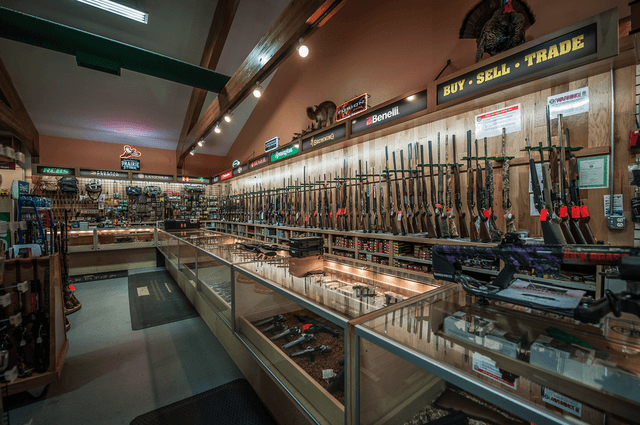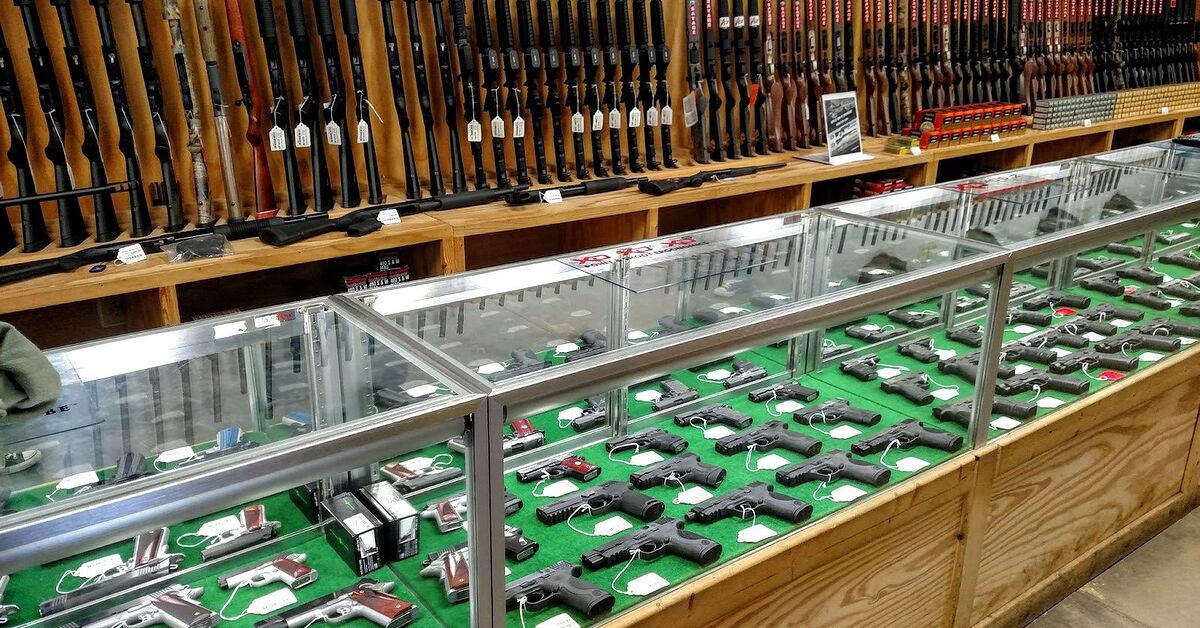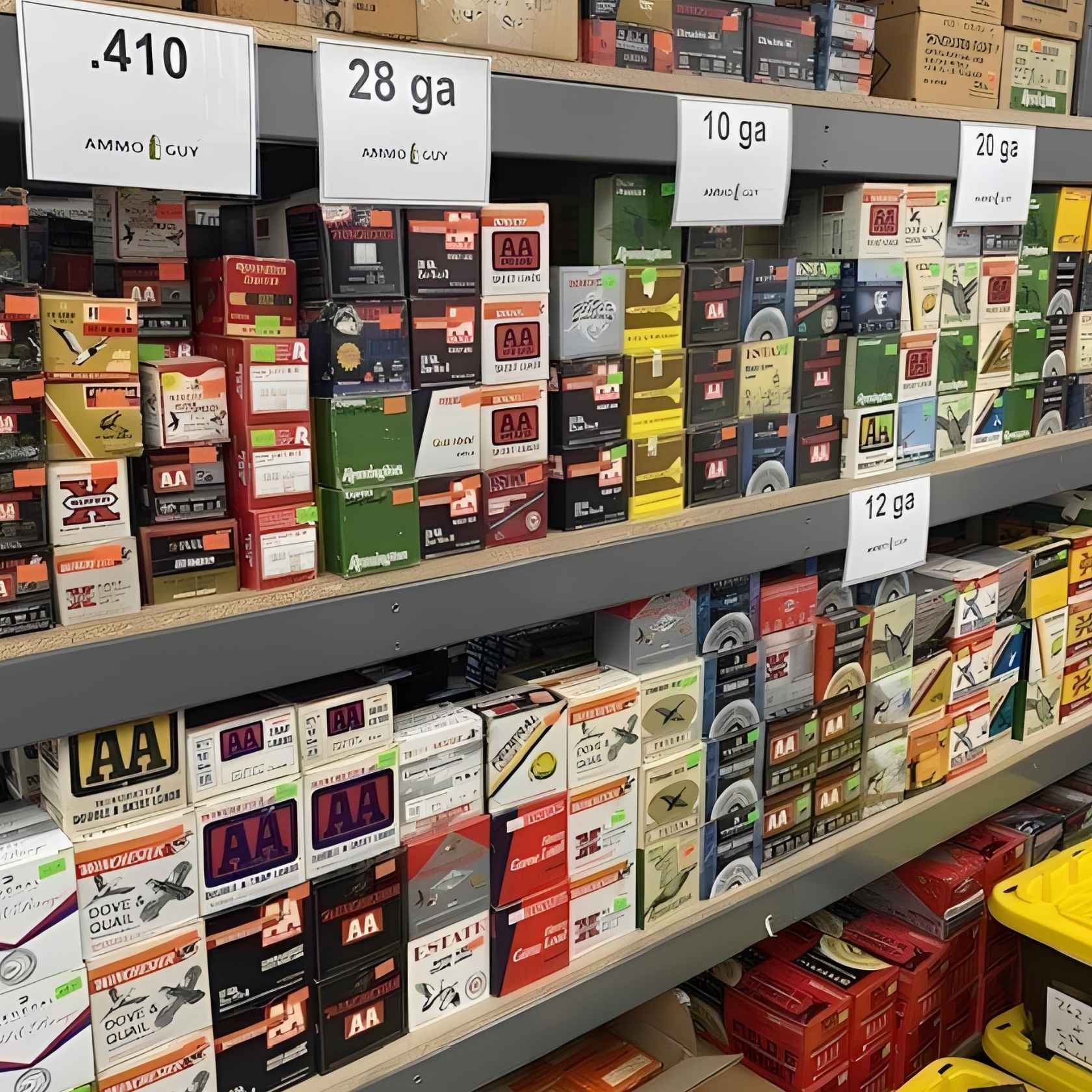A Comprehensive Overview to Ammunition Safety And Security and Storage Space Ideal Practices
Ammo security and storage are crucial facets of accountable gun ownership. Recognizing the elements and kinds of ammunition is foundational. Vital safety and security procedures should be observed throughout taking care of to avoid mishaps. Correct storage remedies differ by atmosphere and call for cautious consideration. As one checks out suggested containers and stock techniques, the importance of regular upkeep comes to be clear. What specific procedures can improve safety and security and lessen risks? Exploring these concerns can cause considerable renovations in preparedness.
Comprehending Ammo Components and Types
Ammunition, the lifeline of weapons, contains several key elements that interact to ensure appropriate performance. The main aspects include the projectile, case, propellant, guide, and occasionally, a heap. The projectile is the bullet that exits the barrel upon shooting. The housing, typically made from brass or steel, holds the various other elements together and offers a seal to have the stress produced when the propellant ignites. Propellant, normally a kind of gunpowder, produces the necessary gas to thrust the projectile onward. The guide, situated at the base of the cartridge, ignites the propellant when struck by the firing pin. Numerous types of ammo exist, including rimfire and centerfire, each created for specific applications and weapons. Comprehending these parts and kinds is vital for anyone involved with weapons, as it lays the foundation for risk-free handling and reliable use.
Crucial Security Procedures for Managing Ammo
When handling ammo, it is important to adhere to important security protocols to decrease threats and guarantee responsible use. People must always treat ammunition as if it is live, no matter of its condition. Wearing safety and security glasses and gloves can offer additional security. It is essential to take care of ammunition in a well-lit location and make sure that the work space is devoid of distractions.Before handling, an individual have to check the ammunition for any kind of indications of damage or deterioration. When unloading or loading, the gun should always be directed in a secure direction, far from people and residential or commercial property. Furthermore, one should prevent positioning fingers on the trigger until all set to fire.Proper interaction is vital; one have to always notify others around when managing ammo. Following these protocols promotes a society of safety and obligation, substantially decreasing the chance of accidents and assuring safe methods in all scenarios.
Correct Storage Solutions for Different Environments
Appropriate storage space remedies for ammo are essential and vary considerably depending upon the atmosphere (Ammunition Pro LLC). Indoor storage standards concentrate on maintaining a safe, completely dry location, while outside storage space factors to consider must represent exposure to aspects. In addition, controlling temperature and humidity is important to guarantee the durability and dependability of ammo
Indoor Storage Space Guidelines
Efficient indoor storage of ammo is essential for assuring security and maintaining the integrity of the products. Ammo must be kept in a trendy, completely dry setting to avoid deterioration. It is advisable to make use of a secured cupboard or secure particularly developed for ammunition storage space, which gives both protection and defense from ecological elements. Containers needs to be identified and organized by quality to assist in easy accessibility and stock management. Stay clear of keeping ammunition in cellars or attics where temperature level and moisture can vary substantially. Furthermore, it is necessary to keep ammo away from combustible products and verify that storage locations are cost-free from wetness. Regular checks for indicators of rust or damages can help keep ammunition dependability and safety and security.
Outside Storage Space Considerations

Temperature Level and Moisture Control
While several could overlook the impact of temperature and humidity on ammunition, these aspects play an important duty in maintaining its integrity and performance. Suitable storage problems commonly require a temperature range between 60 ° F and 70 ° F(15 ° C to 21 ° C )with loved one humidity degrees listed below 50%. Heats can lead to the degeneration of propellant and primer components, while extreme moisture might advertise rust and mold and mildew growth. For those in moist environments, climate-controlled storage services such as dehumidifiers or cooling units are essential. Conversely, in arid areas, keeping wetness degrees with humidifiers can avoid breaking. Inevitably, utilizing appropriate storage space solutions tailored to specific environments boosts the durability and integrity of ammo, guaranteeing secure and effective usage when required.
Recommended Storage Containers and Accessories
Choosing the appropriate storage space containers and accessories is important for maintaining ammunition safety and security and stability. Proper containers must be made from resilient products, resistant to dampness and corrosion, and made to endure influences. Metal ammo cans are extensively recommended as a result of their robust building and construction and airtight seals, which help secure versus environmental factors. Plastic containers, especially those developed for ammunition storage, can also provide appropriate security while being simple and lightweight to handle.In addition to containers, devices such as moisture absorbers, labels, and divider panels improve storage space performance. Wetness absorbers, like silica gel packs, avoid humidity accumulation within containers. Dividers assist arrange various calibers or sorts of ammo, minimizing the risk of blending. Plainly identified containers promote fast identification and access, making sure a well-kept storage space system. On the whole, purchasing appropriate storage remedies contributes significantly to the risk-free handling and long life of ammunition.
Maintaining Track of Your Inventory
Just how can one properly manage ammo stock to guarantee safety and availability? When needed, correct supply administration is crucial for keeping both the security of saved ammo and making certain it is easily offered. Producing a comprehensive inventory log, either electronically or on paper, allows for exact monitoring of quantities, kinds, and expiration dates. Normal audits must be performed to confirm that the supply matches the log, determining inconsistencies promptly.Labeling storage containers plainly can help with fast recognition and retrieval, lowering the danger of mishandling. Implementing a first-in, first-out (FIFO) system makes sure older ammunition is used initially, minimizing the opportunities of expiration. Additionally, keeping a safe area for stock, with restricted accessibility, boosts security. By adopting these techniques, individuals can with confidence handle their ammunition stock, promoting both safety and security and effectiveness in their storage practices.
Transportation Standards for Ammunition
When moving ammunition, sticking to developed guidelines is crucial to guarantee security and conformity with lawful policies. It is vital to store ammunition in a safe and secure, dry container that is particularly made for this purpose, such as an ammo can or difficult case. This protects against damage and decreases the threat of unintentional discharge. Furthermore, ammo should be delivered in the trunk of a vehicle instead of in the traveler compartment to lessen threat in instance of an accident.Drivers have to be aware of regional legislations pertaining to the transport of ammo, including any type of limitations on amount or kind. It is recommended to keep a copy of the purchase receipt and any type of needed licenses easily obtainable. Ammunition should never be blended with weapons throughout transport unless appropriately protected. Complying with these guidelines ensures a much safer transport process and assists stay clear of potential lawful difficulties.
Normal Maintenance and Evaluation Practices
Regular maintenance and examination of ammo is crucial for ensuring safety and integrity. Ammunition Pro LLC. Normal checks assist identify possible problems, such as corrosion or physical damages, which might compromise ammunition efficiency. It is a good idea to check storage conditions occasionally, validating that temperature level and humidity levels continue to be secure and within suggested ranges.Ammunition ought to be visually examined for indicators of damage, including corrosion or bulging. Any kind of cartridges that display such flaws need to be gotten rid of from service instantly. In addition, the storage containers need to be kept undamaged and clean to protect against moisture ingress.Inventory monitoring is vital; maintaining precise documents of ammo amounts and expiry days enables timely turning and disposal of out-of-date supplies. By executing systematic assessment methods, people can considerably decrease the dangers related to ammunition handling and assurance that their products remain in suitable condition. Regular maintenance cultivates a culture of security and readiness in ammo monitoring
Frequently Asked Concerns
What Should I Do if Ammo Is Harmed or Corroded?
When ammo is harmed or rusted, it is essential to manage it meticulously. Disposal must adhere to neighborhood regulations, usually including speaking to authorities or reusing programs, guaranteeing security for both the private and the atmosphere.

Can I Shop Ammo in an Automobile or Vehicle?
Keeping ammo in a vehicle or vehicle is usually https://ammunitionsforsale.com prevented as a result of temperature variations and humidity, which can degrade the ammunition - Ammunition Pro LLC. Furthermore, direct exposure to sunlight and prospective theft position substantial risks to secure storage
Exist Lawful Limitations on Storing Ammo in your home?
Legal constraints on saving ammunition at home differ by jurisdiction. Some areas enforce particular laws concerning storage space techniques, amounts, and accessibility, highlighting the value of neighborhood regulations to guarantee compliance and promote safety and security in storage methods.
Exactly how Often Should I Replace Old Ammunition?

What Are the Indicators of Improperly Saved Ammunition?
Indications of poorly stored ammunition consist of deterioration on housings, protruding or deformed cartridges, signs of wetness damages, fading labels, and an unusual smell. These indicators recommend potential threats and compromise the ammo's dependability and safety. It is vital to deal with ammo in a well-lit area and make particular that the work area is free from distractions.Before handling, a private have to inspect the ammo for any indicators of damages or rust. Reliable interior storage space of ammo is vital for guaranteeing safety and maintaining the integrity of the materials. Selecting the right storage containers and devices is important for preserving ammunition safety and integrity. Plastic containers, particularly those designed for ammunition storage space, can additionally supply appropriate defense while being simple and light-weight to handle.In enhancement to containers, devices such as wetness absorbers, tags, and divider panels improve storage space efficiency. Furthermore, ammo must be transferred in the trunk of a vehicle instead than in the passenger compartment to minimize threat in situation of an accident.Drivers should be aware of neighborhood legislations regarding the transport of ammunition, consisting of any constraints on amount or type.